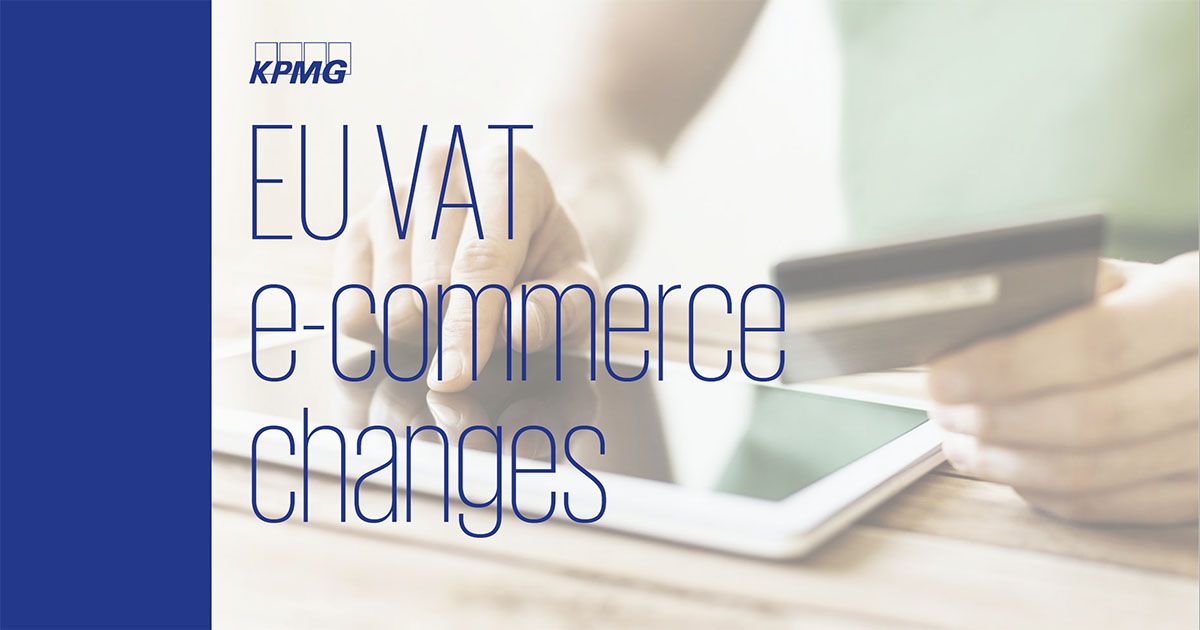Thank you for attending (virtually or physically) the second ‘supply chain VAT introduction’ on e-commerce at the KPMG offices. It was once again a great opportunity to get to know each other, and to see what the mutual gains might be from a collaboration on VAT topics, especially e-commerce .
From the KPMG side, we take away the following from our meeting:
- New VAT rules for online shopping have entered into force on 1 July 2021 as part of efforts to ensure a more level playing field for all businesses, to simplify cross-border e-commerce and to introduce greater transparency for EU shoppers when it comes to pricing and consumer choice.
- In short, the reform aims to ensure that the VAT due on online B2C sales gets paid to the country of the consumer. The new rules affect online sellers and marketplaces/platforms both inside and outside the EU, postal operators and couriers, customs and tax administrations, as well as consumers.
- With respect to online B2C sales of goods from non-EU locations, you should remember that the low value consignment relief for VAT was abolished – so that VAT is charged on all goods entering the EU. However, simplification schemes (IOSS, Special Arrangements for postal/logistics operators, H7 dataset) exist to ease the administrative and compliance burden.
- With respect to online B2C sales of goods within the EU (e.g. from an EU fulfilment center), you should remember that the distances sales thresholds per EU Member States were abolished – so that VAT must be paid in the EU Member State where the goods are delivered (exception: common EU threshold of €10.000). To simplify life for online sellers, the ‘One Stop Shop’ can be used where they can take care of all of their VAT obligations for their cross border B2C sales across the whole of the EU.
- Digital platforms (e.g. online marketplaces) will be liable for the collection and remittance of VAT on sales facilitated via their platform in some cases. Even if these digital platforms are not liable for VAT on those sales, they will have to maintain additional records for the B2C sales facilitated via their platform.
- The new rules are complex (centralized customers clearance is mandatory in some cases, obligation to appoint an intermediary to use IOSS for non-EU companies and the guarantee that might be required, additional record keeping requirements,…) and do not cover all cases (e.g. dropshipping models).
- The general VAT rules remain relevant – e.g. importance of calculating the correct VAT amount on sales (multiple VAT rates in multiple countries), importing goods into the EU may trigger VAT registration obligations (attention points: the use of an individual vs. global VAT number, applying for an ET 14.000 license to optimize cashflows), beware of intra-EU movements of goods, etc.
Relive the webinar
During the presentation, we brought up several examples of where a collaboration with the VAT colleagues of KPMG or the development of VAT related software by C4T for existing clients might be beneficial, but we are of course convinced that new clients could also benefit from these insights or new software tools. We are ready and happy to assist you wherever possible.
Watch the recording
If you missed the webinar or would like to revisit it, we invite you to watch the recording. Should you have any further questions or comments, do not hesitate to reach out to our experts.



